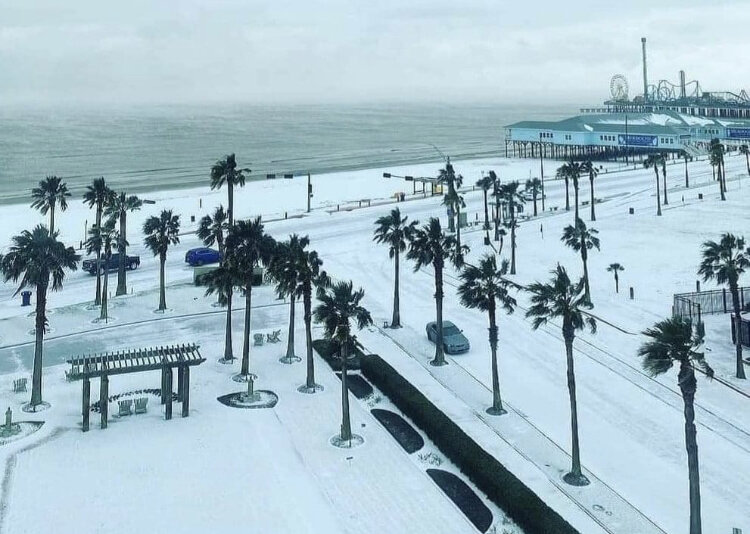My Fig Tree
When I purchased The Bungalow in 2017, there was an eight-foot fig tree adding its charm to a corner on the east side of the backyard.
Admittedly, I didn’t pay much attention to it at first, despite my Italian heritage and the significance of fig trees in our family history.
That changed when it was time to remove a rusty, old chain-link fence and have a cedar privacy fence installed. Sadly, one of the main branches of that fig tree was an obstacle to the new construction.
The fence builders suggested I simply have the fig tree cut down!
Little did they expect me to vehemently object, stop the work at hand and tell them more than they ever wanted to know about fig trees!
Little did they know the fig tree has always been a symbol of abundance, fertility and sweetness. Little did they know that the fig tree’s abundance of leaves and fruit make it a great shade tree (as little sun passes through their branches.). Little did they know that’s why so many Italian immigrants (like my grandfather) planted fig trees before they planted anything else in their gardens.
I told them, “Many varieties of fig trees originated in Italy, a country very dear my heart!”
I told them, "Fig trees produce delicious fruit. They can grow to heights of 15 to 30 feet; some of them reach up to 50 feet.”
The fence builders listened with more respect than interest but, finally, the crew boss offered another suggestion, “If you really want to save that fig tree, we could simply lop off that one large branch over there. The tree won’t look too good, but it should survive. But, it may not bear fruit for awhile.”
Without hesitation, I agreed to that plan! And, I’m glad I did.
Today, my treasured fig tree is still standing; it’s taller, fuller and prettier than ever! Yearly, it produces the sweetest fruit, and harvests are always plentiful.
As a result, I've collected a lot of recipes using figs. Most were found in Italian cookbooks. I’ve learned to make fig jam and fig chutney, fig pudding, pies and tarts. I learned to add figs to salads and how best to serve them with cheeses and meats and on pizzas.
I’ve also learned that ripe figs can be put in the freezer to eat (or cook with) later on.
-
2022
- Mar 17, 2022 Ivy Dishes
- Jan 29, 2022 Grace Episcopal Church
- Jan 1, 2022 100 Years
-
2021
- Aug 25, 2021 My Fig Tree
- Apr 28, 2021 Darlene's Shrimp
- Apr 24, 2021 Oleander Festival
- Feb 27, 2021 Great Winter Storm
- Feb 10, 2021 The Mourning Wave
-
2020
- Oct 26, 2020 Crepe Myrtles
- Sep 18, 2020 Trimming the Palms
- Jul 19, 2020 The Dancers
- Jul 11, 2020 Postcards
- Jun 20, 2020 Resilience Flag
- Jun 19, 2020 Juneteenth
- Jun 10, 2020 Silk Stocking
- May 27, 2020 Tree Sculptures
- May 6, 2020 Babe's Beach
- Apr 22, 2020 Opera House
- Mar 2, 2020 Texas Heroes Monument
- Feb 15, 2020 Mardi Gras Parade
- Jan 19, 2020 St. Joseph's Church
-
2019
- Dec 15, 2019 Celebrations
- Nov 6, 2019 Fresh Paint
- Oct 21, 2019 Jazz Age Series
- Oct 20, 2019 ARToberFEST
- Oct 6, 2019 Stingeree
- Oct 5, 2019 Pumpkin Time
- Oct 2, 2019 Sea Turtles
- Sep 29, 2019 Powhatan House
- Sep 24, 2019 The Dolphins
- Sep 5, 2019 Lucas Apartments
- Aug 24, 2019 Sandcastles
- Aug 9, 2019 The Daily News
- Jul 18, 2019 Beach Walk
- Jul 10, 2019 La King's
- May 25, 2019 Pleasure Pier
- May 1, 2019 Bolivar Ferry
- Mar 15, 2019 Saengerfest Park
- Jan 19, 2019 Moody Mansion
-
2018
- Dec 18, 2018 The Vintage Suitcase
- Dec 17, 2018 Festival of Lights
- Dec 2, 2018 Sunday Brunch
- Nov 21, 2018 Hendley Row
- Oct 27, 2018 Island Oktoberfest
- Sep 20, 2018 The Strand Clock
- Sep 16, 2018 St. Mary Cathedral
- Aug 11, 2018 No More Shed
- Jun 10, 2018 Rosenberg Library
- May 7, 2018 Stepping It Up
- May 3, 2018 A Happy Hour
- May 1, 2018 Ashton Villa
- Apr 21, 2018 96th Birthday
- Apr 1, 2018 Seawolf Park
- Mar 27, 2018 Ball High School
- Mar 15, 2018 East End
- Feb 1, 2018 Tremont House
- Jan 26, 2018 Menardi Gras
- Jan 24, 2018 Mardi Gras Decor
-
2017
- Dec 1, 2017 Miss Ruby
- Oct 8, 2017 Railroad Museum
- Oct 7, 2017 Tall Ship Elissa
- Sep 9, 2017 Star Drug Store
- Sep 8, 2017 1900 Storm Statue
- Aug 6, 2017 The Turquoise Table
- Aug 1, 2017 Bishop's Palace
- Jul 23, 2017 Garten-Verein
- Jul 21, 2017 Yard Work
- Jul 16, 2017 The Strand
- Jun 17, 2017 Stewart Beach
- Jun 7, 2017 The Original
- Jun 3, 2017 Murdochs
- May 27, 2017 Bryan Museum
- May 19, 2017 Firemen on Call
- May 13, 2017 Williams-Borden Neighborhood
- May 1, 2017 Oleander City
- Apr 28, 2017 God Winks












